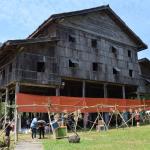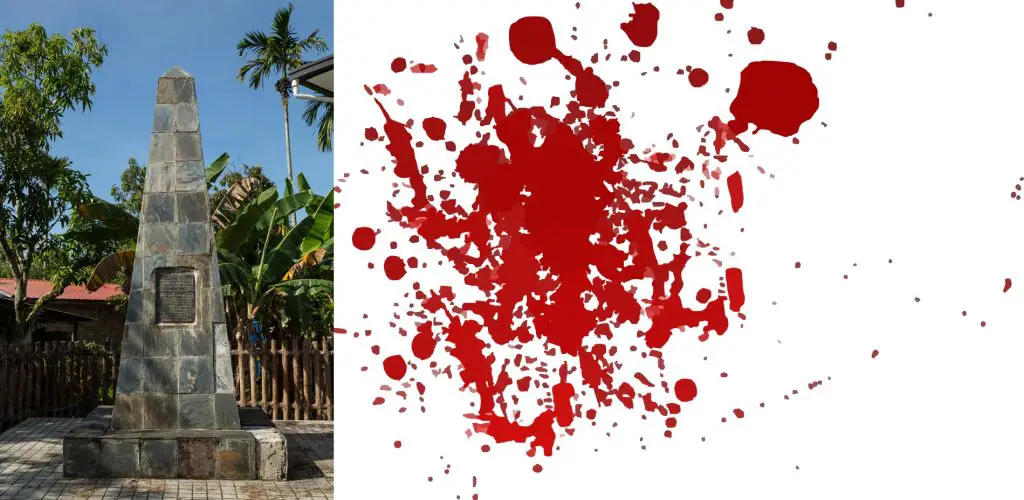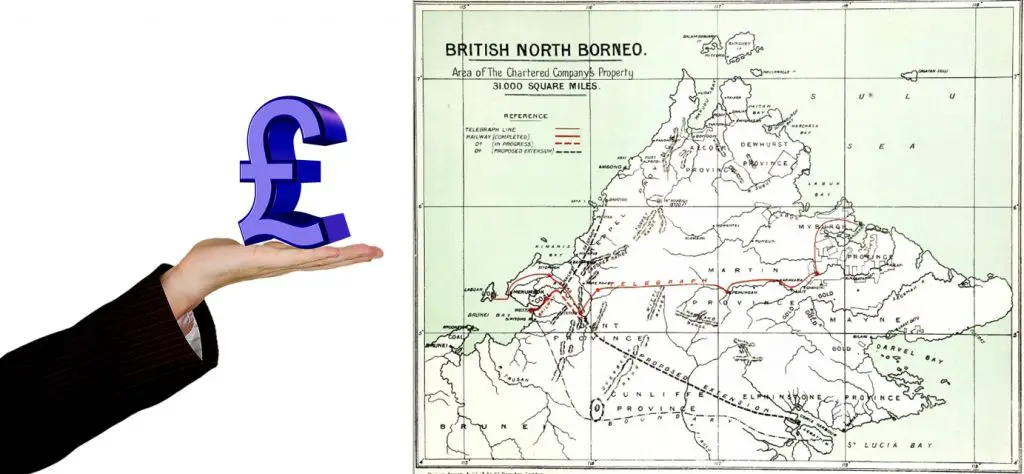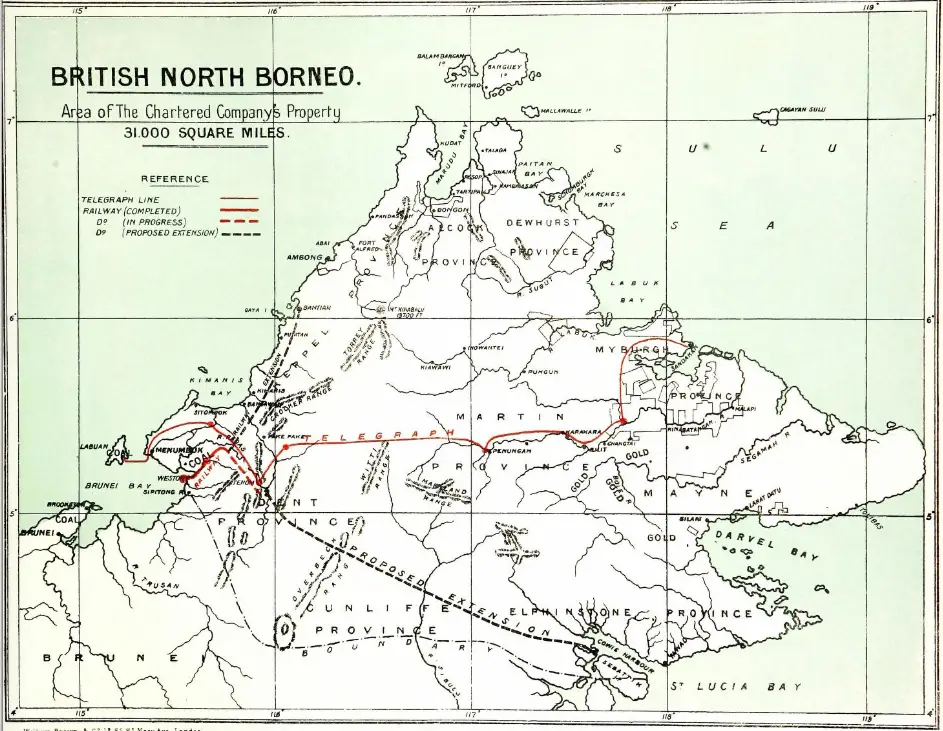“In the Sandakan prisoners’ compound, Warrant Officer Hisao Murozumi had his sword raised. It would be the last atrocity in this camp in this backwater of war. Terrible things happen in battle. In the heat and smoke of it, morality enters a strange world. Killing is survival. What Murozumi was about to do was barbarism. A prisoner, tall, thin, wearing only a loincloth was pushed down to kneel beside a slit trench. A black cloth was tied around his eyes. His hands were free because he was too weak to struggle. Murozumi carefully took his stance. It was a matter of pride to do this properly. He stood legs apart, arms above his head, the blade in a two-hand grip pointing directly backward, eyes fixed on the bare, supremely vulnerable back of neck. The sword flashed, John Skinner was beheaded and guards shovelled earth into the trench.”
That was how Cameron Forbes described the final moment of John Skinner in his book Hellfire.
Who was John Skinner? Why was he beheaded mercilessly? And what happened to the Japanese officer who swung his sword to kill Skinner?
John Skinner and his brother Edward “Ted”
According to The Sydney Morning Herald, John Skinner and his younger brother Edward were from Mount Mackenzie near Tenterfield, Australia.
When World War II broke out, the brothers were working for a timber contractor. Their job was considered a reserved occupation or essential service.
During WWII, this kind of occupation was deemed important enough to the country that those serving in such occupations were exempted from military service.
However, the brothers believed they should do their duty, so they enlisted.
Both were then posted to 2/10 Field ambulance and sent to Malaya.
After Singapore was defeated by Japan on Feb 15, 1942, they both became prisoners of war (POWs).
In July that year, they were among 1,500 POWs who boarded a Japanese hell ship and were sent to Sandakan in North Borneo (now Sabah).
The brothers separated at Sandakan POWs Camp
At first, life at the POW Camp was bearable. The POWs were tasked to build an airstrip for the Japanese and they had food to eat.
Things reportedly worsened in August 1943. Some suggested it was due to the arrival of Formosan guards who were more cruel than the Japanese.
Another factor might have been because the Japanese moved the Allied commanders and high-ranking officers who were imprisoned in Sandakan to Batu Lintang camp at Kuching.
Since then, there were no one left to fight for the rights of the POWs and boosted their morality. The Japanese also started to cut down their food and medicine supply, causing many to suffer from starvation and sickness.
In the beginning of 1945, the Japanese started to march the POWs westward into the mountainous town of Ranau, which was about 260km away.
They were sent in three phases. That was when the two brothers were separated as Edward was chosen to march to Ranau.
However, Edward was determined to survive and the only way to do that was to escape.
Together with him were Owen Campbell, Ted Emmet, Keith Costin and Sidney Webber.
They took along 12 tins of rice, six tins of salmon and some dried fish, all stolen from the Japanese.
Unfortunately, the group had one main problem, they were sick and malnourished.
The Fate of Edward Skinner
They made their escape on June 8, 1945, taking the small window of opportunity when an Allied plane flew over causing panic and chaos.
In Never Surrender: Dramatic Escape from Japanese Prison Camps, Mark Felton wrote that the group only managed to “painfully hobble a couple of miles through the jungle towards the coast before exhaustion and sickness stopped them in their tracks.”
“The following day Campbell had an attack of malaria severe enough that he could not walk any further and the whole group rested up. On 10 June Campbell felt sufficiently recovered to try again, but this time Ted Skinner’s dysentery meant that another member of their party was immobilised and once again the group rested in the jungle.”
That was when the group separated. Emmet, Webber and Costin went on heading to the coast. Campbell stayed with Edward.
Then, Edward did the unthinkable when Campbell went out to look for food.
Believing that he would not survive as he was sick with dysentery and he did not want to delay Campbell, Edward reportedly committed suicide by slitting his own throat.
His action came as a surprise for Campbell, as Edward was known for his faith and to always be carrying a bible with him during his imprisonment.
The last group of POWs at Sandakan POW Camp
Meanwhile, the key witness who watched what had happened to the remaining POWs at Sandakan was Wong Hiong.
At that time, he was a 15-year-old Chinese boy who worked in the Japanese cookhouse.
Since the remaining POWs were not able to march to Ranau, they were left in the open on stretchers, simply to die.
Paul Ham in his book Sandakan described the dehumanising situation that the POWS had gone through.
“The only food they get is a small rice ration; they drink whatever happens to fall on their faces. Some are barely able to open their mouths. The stronger ones manage to keep a few scant belongings by their side; a dixie, a blanket, a razor. The ration disappears and a small bucket of rice is dumped in their vicinity. Most prisoners can’t reach it.”
Wong tried to help the prisoners by stealing a little course of salt from the camp kitchen. But he was caught and beaten. Another friendly local named Ali Asa brought them some tapioca and kangkung. The men nibbled them uncooked.
Ham stated, “An English officer, Lieutenant Phillip Young dies on 26 July, and the rest fade away. In the first week of August, five survivors remain: the Australians John Davis, 34, Walter Hancock, 42, Ivan Sinclair, 36, and John Skinner, 31; and one British soldier Harold Rooker, 31. They beg for more food, but Ali Asa refuses: the Japanese threaten to shoot anyone caught helping the prisoners.”
On the morning of Aug 15, only one still alive among the group and that was John Skinner.
The witness of John Skinner’s death

When Sergeant Hisao Murozumi executed Skinner, he did not expect to have any witnesses.
After the war ended, Murozumi testified at the Labuan War Crimes Tribunal in January 1946 that remaining POWs were not massacred.
He claimed that they all died one after another of illness starvation between July 13 and Aug 15.
Moreover, he commented that they did not shoot the remaining prisoners because they knew they would die in any case.
“We did not cook for the POWs at this stage; those who were able to crawl about were caring for the others. These POWs eventually died from lack of care and starvation, being too weak to eat. The last POW died about 15 August 1945. From 13 July to 13 August, 30 odd POWs died from malnutrition and lack of medical attention. As they died, their bodies were thrown into slit trenches by Javanese coolies and buried.”
Wong Hiong’s testimony

Murozumi’s testimony clashed with Wong’s. Wong testified, “The one surviving POW came from No 3 Camp (Australia). His legs were covered in ulcers. He was a tall dark man with a long face and was naked except for a loin cloth.
One morning at 7am, I saw him taken to a place where there was a trench like a drain. I climbed up a rubber tree and saw what happened. Mirojumi (Murozumi) was with the man and fifteen Japs with spades were already at the spot. Mirojumi made the man kneel down and tied a black cloth over his eyes. He did not say anything or make any protest. He was so weak that his hands were not tied. Mirojumi cut his head off with one sword stroke. Mirojumi pushed the body into the drain with his feet. The head dropped into the drain. The other Japs threw in some dirt, covered the remains, and returned to the camp. The Japs went away the next day and that was the finish of my job.”
Was Murozumi charged for John Skinner’s death?
Unfortunately, John’s death was not one of the cases prosecuted during the war crime trials.
One main reason was Wong’s statement only came to light in April 1947, long after the Labuan trials were completed.
Besides, Yuki Tanaka in his book Hidden Horrors: Japanese War Crimes in World War II wrote that at that time Murozumi was already serving a life sentence for his other crimes at the Sandakan camp.
“With only one witness and relatively little forensic evidence, the cases might well have been considered too weak to make successful prosecution a likely outcome,” Tanaka wrote.
Five hours after John was executed, Emperor Hirohito announced Japan’s unconditional surrender marking the end of WWII.
After the war, John was buried in an unmarked grave at Labuan War Cemetery until author and military historian Lynette Silver identified him. Now his grave bears his name while his brother’s body has never been found.































